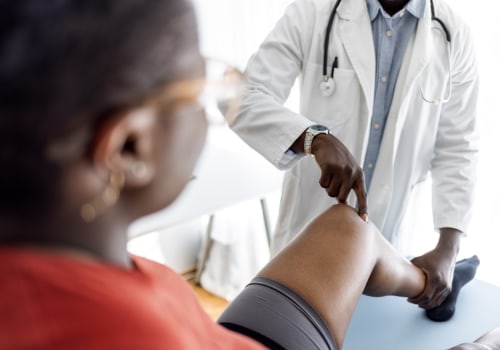When to see a doctor · The knee joint is bent or deformed. Knee injuries can be caused by a variety of factors, such as injury, overuse, arthritis, and obesity. While many knee problems can be treated with self-care measures, such as rest, ice and elevation, some may require medical attention. If you have knee injuries, pain, swelling, or stiffness in your knee, you may want to see a doctor or orthopedic specialist.
He or she will likely ask you about your medical history and symptoms and perform a physical exam. Imaging tests, such as x-rays, MRIs and CT scans, may also be ordered to help diagnose the problem. Once the diagnosis is made, appropriate treatment options will be discussed. In many cases, conservative measures, such as physical therapy and weight loss, can be successful in treating knee problems and helping to alleviate pain. However, surgery may be necessary in some cases.
Many people who injure their knees may think twice before going to an orthopedic doctor for treatment, especially if the symptoms are bearable. However, evaluation of your knee by a knee doctor can allay all your concerns. A thorough evaluation will reveal the extent of the injury and your doctor can prescribe appropriate treatment. Before trying to self-treat a knee injury, talk to a doctor. If knee pain persists or worsens, it may be time to see a specialist.
Orthopedic doctors can evaluate your condition and provide you with advanced care. These conditions can worsen without treatment, so it's important to see a doctor if the pain is severe enough to require pain medication more than a few times a month, or if the knee is stiff, swollen, or has a limited range of motion. Treatment plans are tailored to each patient and range from conservative options such as physical therapy, medications or injections to advanced surgical procedures, such as arthroscopy or knee replacement, ensuring optimal knee health and function. Knee arthritis, whether osteoarthritis or rheumatoid arthritis, can affect one or both sides of the knee or the front of the knee and, less commonly, the back of the knee.
An impact injury to the kneecap (such as a fall on the knee) can cause pain; however, most patella pain is actually pain in the patellofemoral joint, where the patella meets the femur (femur). This is sudden pain in the knee that occurs after an injury or trauma, such as while playing a sport, a fall or an accident. The type of specialist you see for knee pain may depend on several factors, especially if you have suffered an acute injury, such as spraining your knee during a sporting activity or being impacted during a fall or other accident. Knee deformity may be due to a dislocation of the patella, which comes out of its groove at the end of the femur and causes the knee to appear deformed.
If you feel knee pain, an orthopedic doctor will first perform a thorough evaluation to determine the cause of the pain. A common cause of pain in the back of the knee is overuse or strain of one or more muscles, ligaments, or tendons due to activities such as running or walking on a bike. Acute knee pain is usually sharp and severe (sometimes described as a throbbing sensation) and somewhat localized. Every case is different, but here's a general guide to finding the right doctor for your specific knee pain or condition.
GPs are ideal for mild knee problems, such as a mild strain, sprain, or general knee discomfort that doesn't persist or worsen. If standing on the affected knee causes severe pain or if the knee bends, it is likely an injury to the ligaments in the knee.






